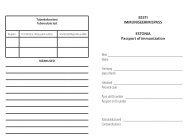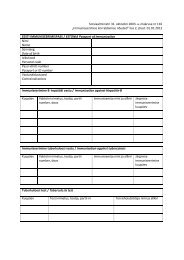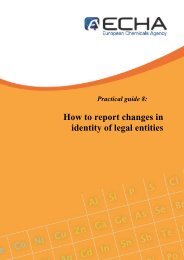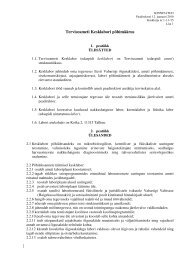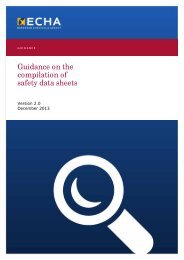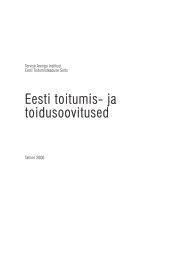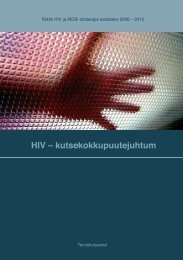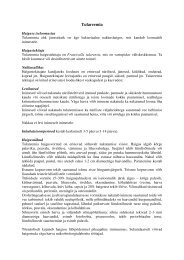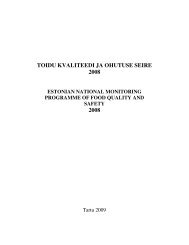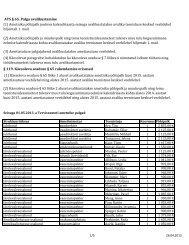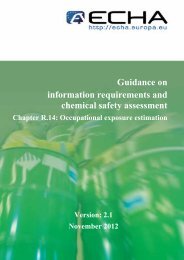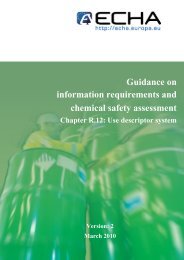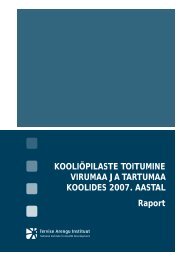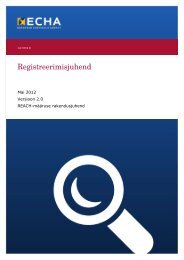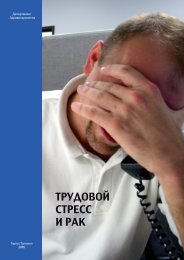Guidance for monomers and polymers - ECHA - Europa
Guidance for monomers and polymers - ECHA - Europa
Guidance for monomers and polymers - ECHA - Europa
You also want an ePaper? Increase the reach of your titles
YUMPU automatically turns print PDFs into web optimized ePapers that Google loves.
24<br />
<strong>Guidance</strong> <strong>for</strong> <strong>monomers</strong> <strong>and</strong> <strong>polymers</strong><br />
Version 2.0 April 2012<br />
4. Analytical methods<br />
The following sections briefly describe some of the available analytical methods which may be<br />
used by manufacturers or importers of polymeric substances to establish their obligations<br />
under REACH.<br />
4.1 Identification of polymer substances<br />
The preferred method to determine whether a substance falls under the definition of a polymer<br />
is Gel Permeation Chromatography (GPC). Guidelines on the determination of the number<br />
average molecular weight (M n ) <strong>and</strong> molecular weight distribution using GPC are available in the<br />
OECD TG 118 (1996) 10 . Whenever practical difficulties in using GPC are expected or<br />
encountered, alternative methods <strong>for</strong> the determination of the M n are also listed in an annex to<br />
the OECD guideline.<br />
4.2 Monomer/other reactant content in the polymer<br />
4.2.1 Monomer/other reactant concentration<br />
The monomer/other reactant concentration in the polymer as specified in Article 6(3)(a) does<br />
not refer to the weight by weight (w/w) content of the monomer substance <strong>and</strong> any other<br />
substance in the polymer substance. Rather, it refers to the weight by weight (w/w) content of<br />
the chemically bound monomer units (reacted <strong>for</strong>m of the <strong>monomers</strong>) <strong>and</strong> other chemically<br />
bound substance(s) in the polymer substance. It should be noted that the molecular weight of<br />
the monomer unit is not necessarily the same as the monomer itself, but can be lower. These<br />
considerations are illustrated in Example 5.<br />
There are several quantitative analytical methods available to determine the weight percent of<br />
monomer substance(s) or other substance(s) in the <strong>for</strong>m of monomeric units, or substances<br />
chemically bound to polymer molecules. Examples of these methods are mass spectrometry,<br />
gas chromatography, infra-red spectroscopy <strong>and</strong> nuclear magnetic resonance spectroscopy.<br />
Alternatively, the weight percent of monomer units or any other chemically bound substance<br />
may be estimated from the amount of <strong>monomers</strong> or other reactant fed into the reaction vessel<br />
<strong>and</strong> the quantity of unreacted <strong>monomers</strong> or other reactant that are present in the final<br />
polymer.<br />
4.2.2 Monomer/other reactant tonnage to be considered <strong>for</strong> registration<br />
purposes<br />
In accordance with condition (b) of Article 6(3), the monomer(s) <strong>and</strong> any other substance(s)<br />
ending up chemically bound to the polymer <strong>and</strong> <strong>for</strong> which the corresponding tonnage as<br />
reagents makes up 1 tonne or more per year are to be considered <strong>for</strong> registration under Article<br />
6(3). Furthermore, the quantities of unreacted monomer or any other substance (within the<br />
meaning of Article 6(3)) present in its unreacted <strong>for</strong>m as part of the polymer also need to be<br />
registered according to Article 6(1). For each monomer substance <strong>and</strong> any other substance,<br />
the quantity to be registered should there<strong>for</strong>e correspond to the cumulated tonnage of the<br />
10 OECD Guidelines <strong>for</strong> the Testing of Chemicals are available on the OECD website at<br />
http://www.oecd.org/findDocument/0,3354,en_2649_34377_1_1_1_1_37465,00.html.<br />
Annankatu 18, P.O. Box 400, FI-00121 Helsinki, Finl<strong>and</strong> | Tel. +358 9 686180 | Fax +358 9 68618210 | echa.europa.eu



